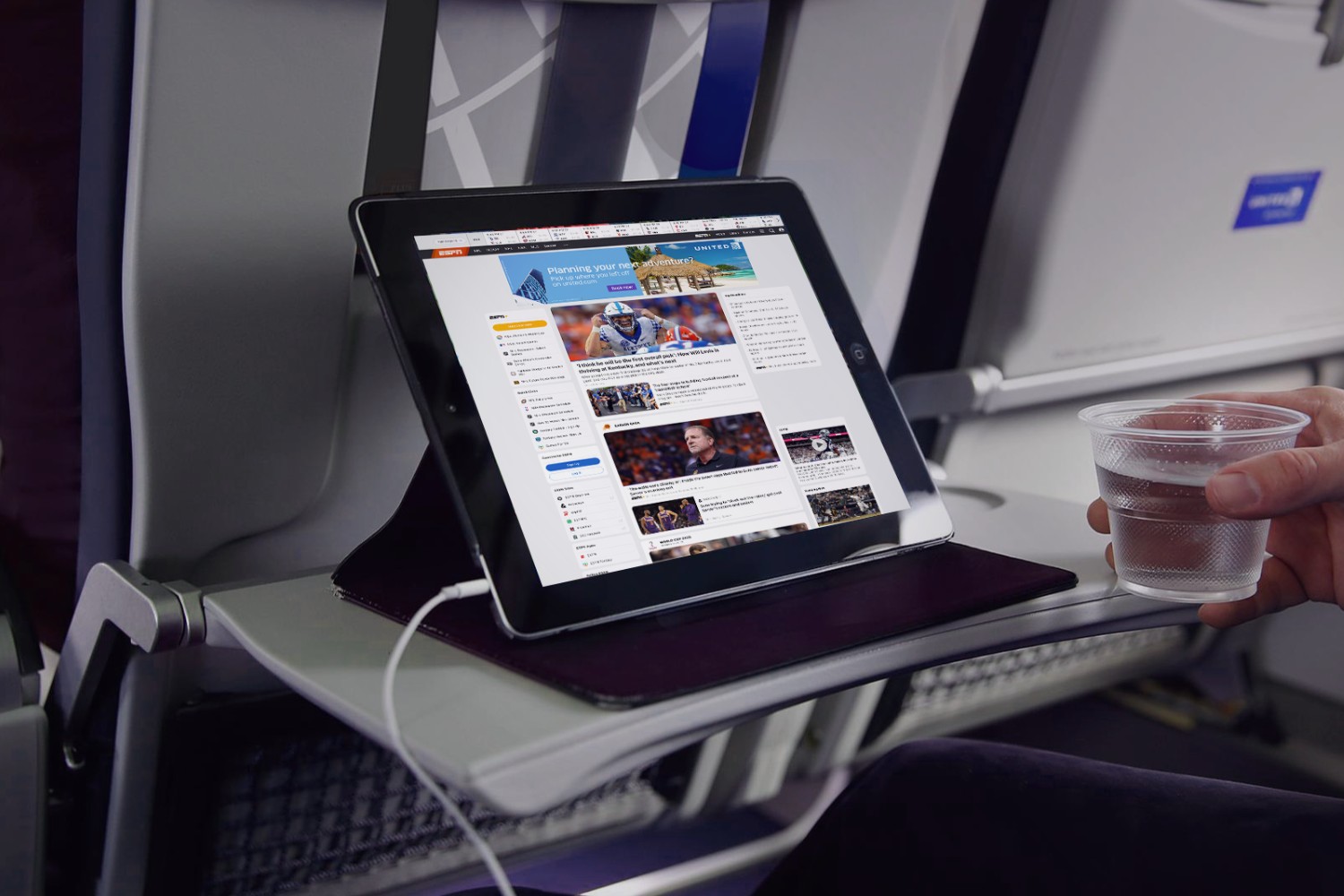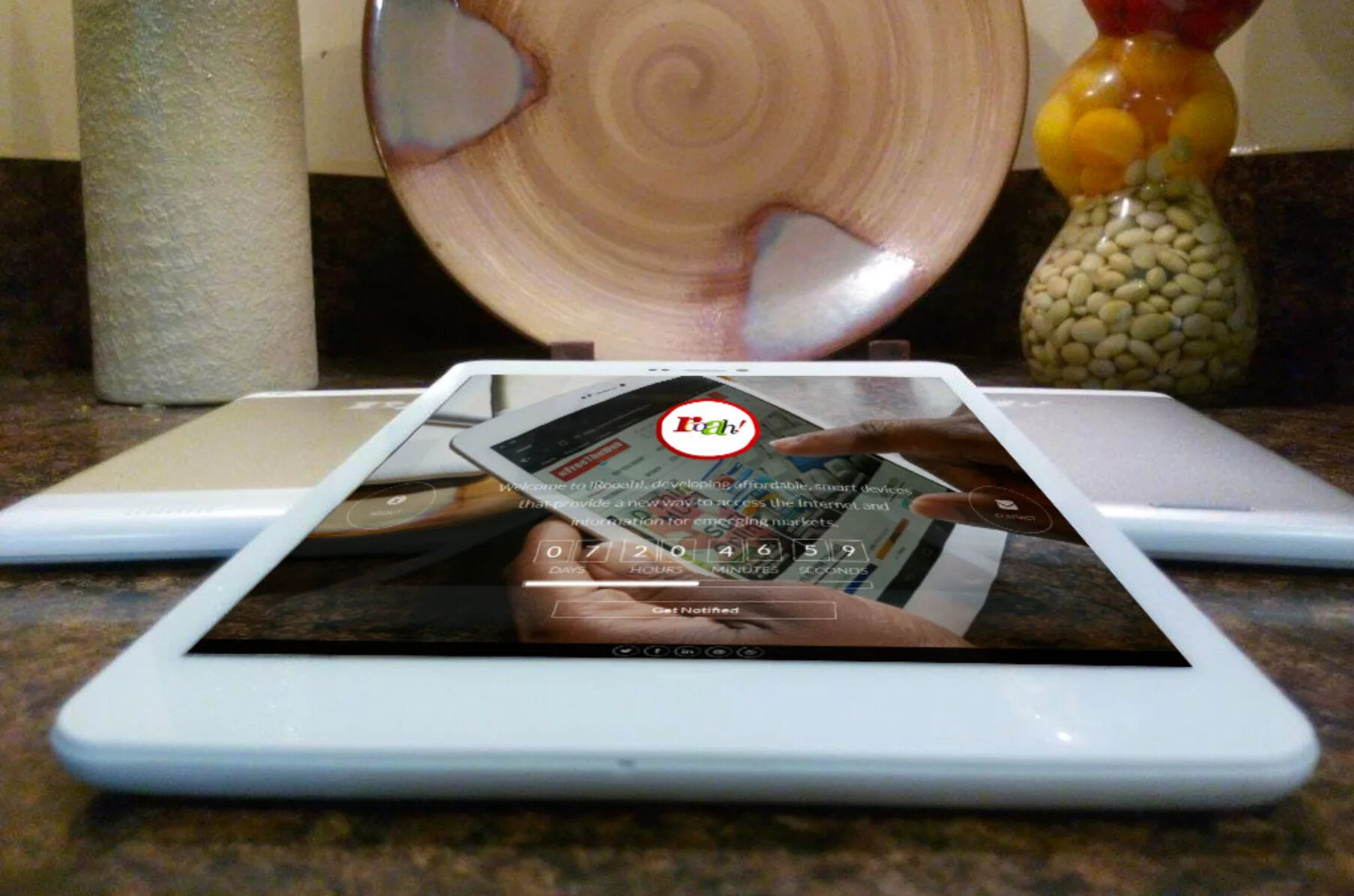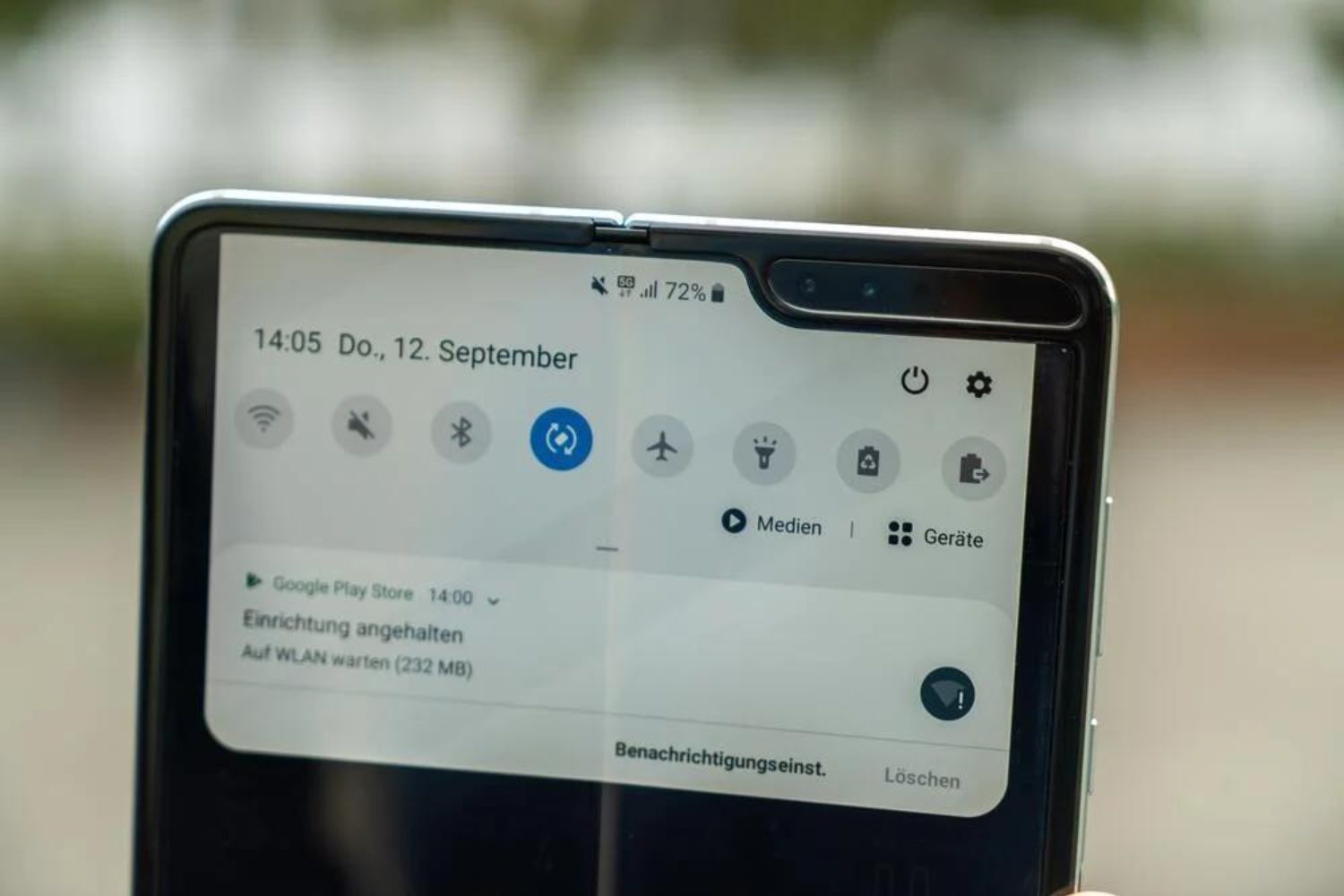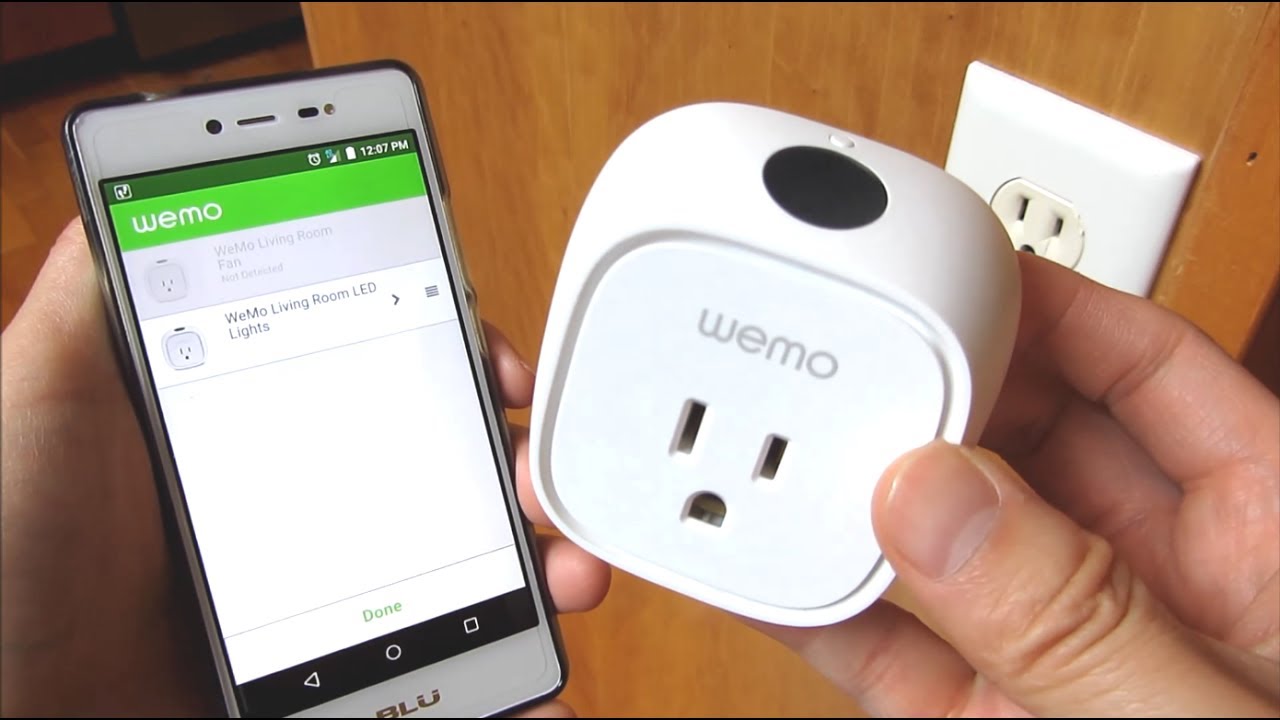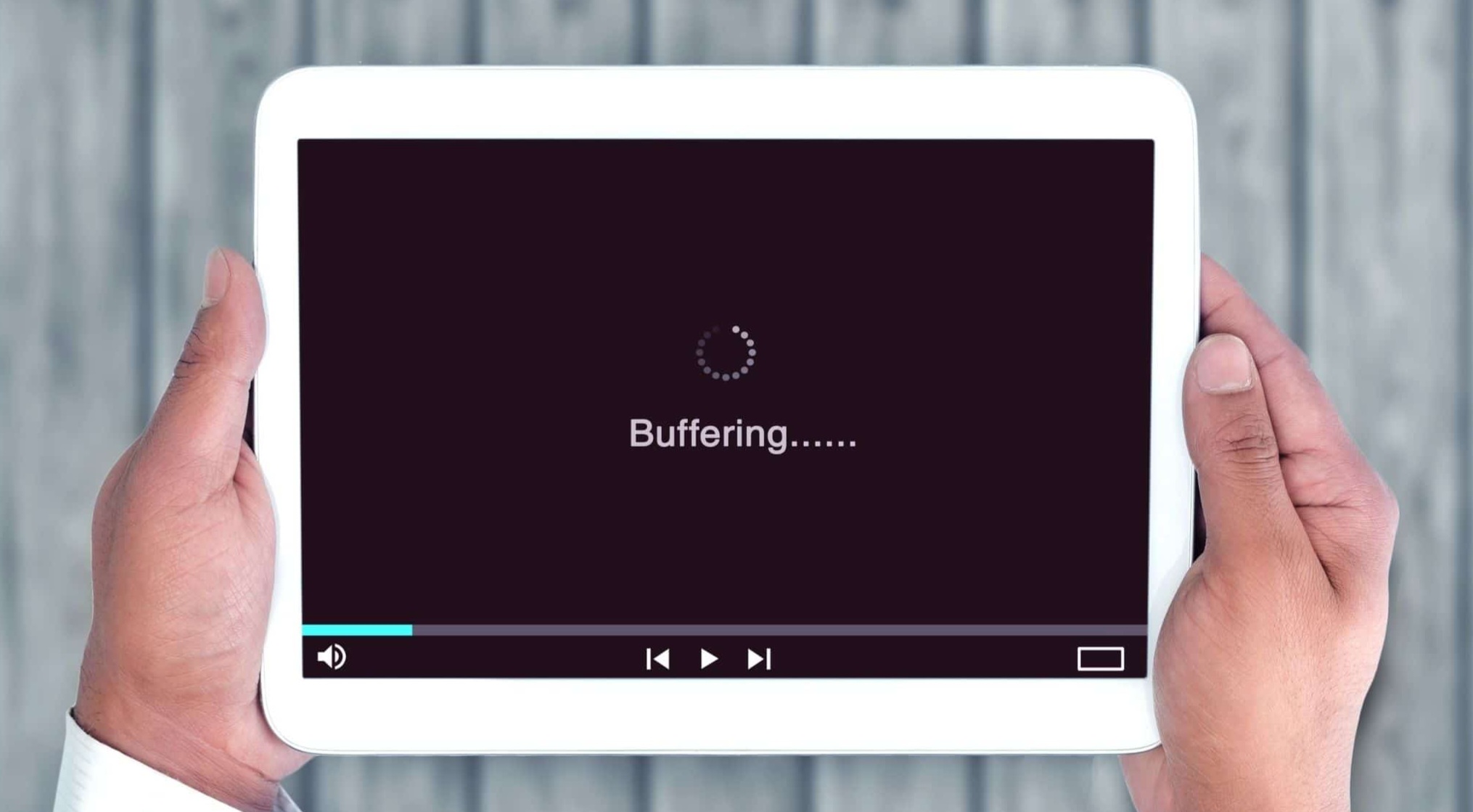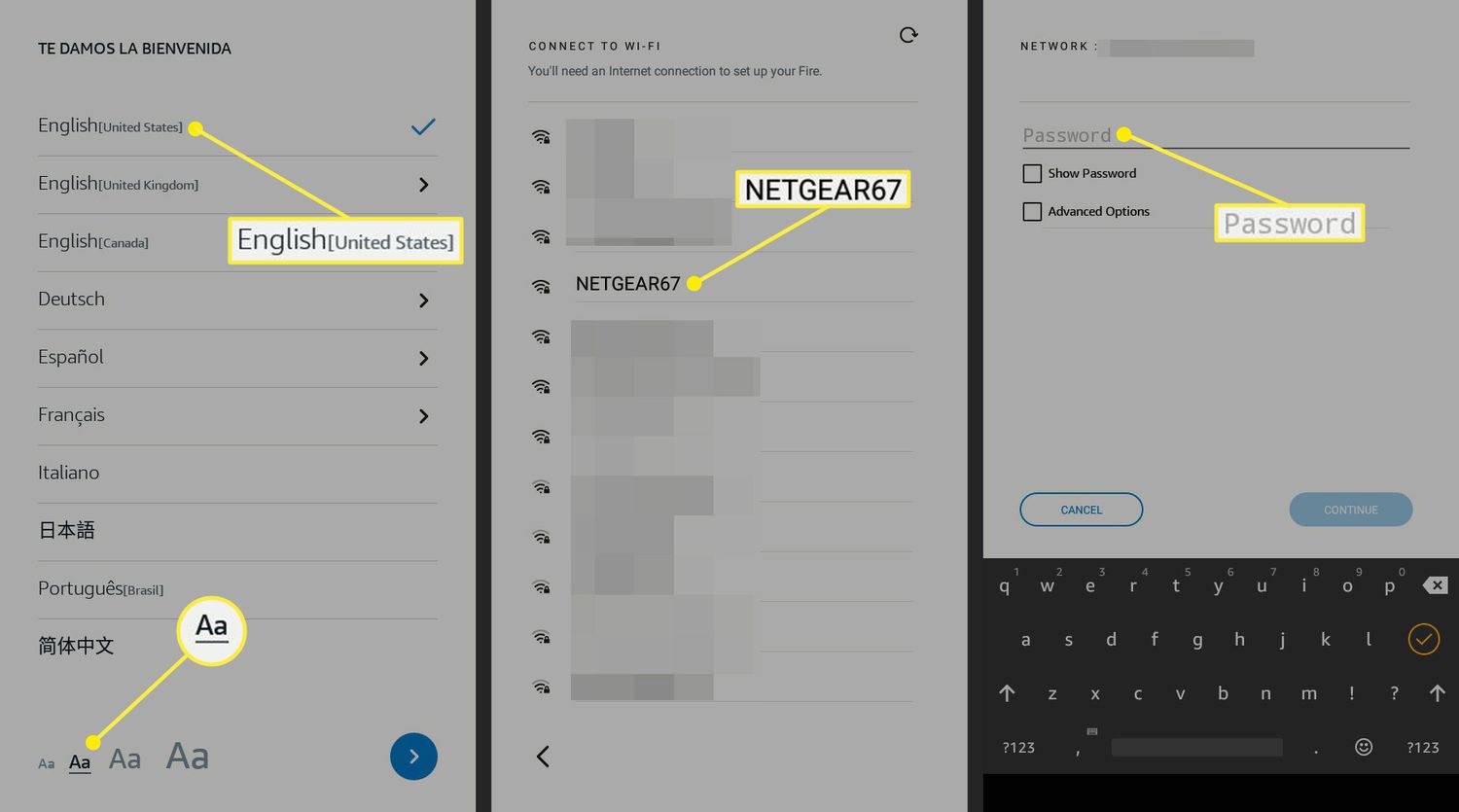Introduction
Welcome to the digital age, where connectivity is paramount. In today’s fast-paced world, staying connected is essential, especially when you’re on the go. Whether you’re traveling, working remotely, or simply enjoying a coffee at your favorite café, having access to the internet is crucial. Tablets have become popular devices for their portability and versatility, allowing users to browse the web, stream videos, and stay connected wherever they may be. However, one question that often arises is, “How can I get free Wi-Fi on my tablet?”
Fortunately, there are numerous ways to access free Wi-Fi on your tablet, and in this article, we will explore some of the most effective methods. From public Wi-Fi hotspots to clever solutions like tethering and portable hotspots, we’ll cover it all to help you stay connected without breaking the bank.
Before we dive into the solutions, let’s start by understanding what Wi-Fi is and how it works. Wi-Fi, short for Wireless Fidelity, is a technology that allows devices like tablets, smartphones, and laptops to connect to the internet wirelessly. It relies on radio waves to transmit and receive data between a device and a wireless router or access point, providing internet connectivity without the need for physical cables.
Now that we have a basic understanding of Wi-Fi, let’s explore the different ways you can get free Wi-Fi on your tablet. Whether you’re in a coffee shop, library, airport, or even a shopping mall, there are plenty of opportunities to connect to free Wi-Fi networks and enjoy seamless internet access. Let’s dive into the details and explore each option in more depth.
Understanding Wi-Fi
Wi-Fi has become an integral part of our daily lives, allowing us to connect to the internet without the need for physical wires. But how does it actually work?
At its core, Wi-Fi is a wireless networking technology that uses radio waves to transmit and receive data. It operates on specific frequency bands, typically 2.4 GHz or 5 GHz, and relies on a wireless router or access point to create a network. This network is then used to connect devices like tablets, smartphones, and laptops to the internet.
When a device wants to connect to a Wi-Fi network, it sends a request to the wireless router or access point. The router verifies the device’s credentials and assigns it an IP address, which acts as a unique identifier for that device on the network.
Once connected, the device can send and receive data through the router, allowing users to browse the web, stream videos, and download files. The data is broken down into small packets and transmitted over the airwaves using modulation techniques. These packets are then received by the router, which reassembles them into the original data.
It’s important to note that Wi-Fi signals have a limited range, typically around 100-150 feet indoors. The range can be influenced by factors such as walls, interference from other devices, and the specific capabilities of the router. This means that the further you are from the router, the weaker your Wi-Fi signal will be.
Security is another significant aspect of Wi-Fi. To prevent unauthorized access, most Wi-Fi networks are password protected. When connecting to a network, you are prompted to enter the password to verify your identity. This encryption ensures that only authorized users can access the network and all data transmitted over it is secure.
Overall, Wi-Fi has revolutionized the way we connect to the internet. Whether you’re at home, at work, or in a public space, Wi-Fi enables us to stay connected and access information with ease. Now that we have a better understanding of Wi-Fi, let’s delve into the various ways you can get free Wi-Fi on your tablet.
Different Ways to Get Free Wi-Fi on Your Tablet
When it comes to getting free Wi-Fi on your tablet, there are several options available to you. Let’s explore some of the most common and effective methods:
- Public Wi-Fi Hotspots: One of the easiest ways to access free Wi-Fi is by connecting to public Wi-Fi hotspots. Many places, such as cafes, restaurants, and hotels, offer free Wi-Fi to their customers. Simply look for the network name (SSID) displayed in the establishment, connect to it, and follow any prompts to gain access. Keep in mind that not all public Wi-Fi networks are secure, so it’s crucial to exercise caution when transmitting sensitive information.
- Coffee Shops and Restaurants: Coffee shops and restaurants are known for providing free Wi-Fi to their patrons. Grab your tablet, order your favorite beverage, and enjoy surfing the web while sipping your drink. Just make sure to ask the staff for the Wi-Fi password if it’s not displayed prominently.
- Libraries and Museums: Libraries and museums often provide free Wi-Fi access to enhance visitors’ experience. Whether you’re researching, studying, or simply exploring the exhibits, you can connect to their Wi-Fi network to enhance your knowledge and stay connected.
- Airports and Train Stations: When traveling, airports and train stations can be a great place to access free Wi-Fi. These transportation hubs understand the importance of connectivity for travelers and typically offer Wi-Fi hotspots throughout their premises.
- Shopping Malls and Retail Stores: Many shopping malls and retail stores now provide free Wi-Fi to their customers. This not only keeps shoppers connected but also offers opportunities for businesses to engage with customers through promotions and advertisements.
Aside from these common options, there are also creative solutions to get free Wi-Fi on your tablet. For example, some cities have implemented free Wi-Fi zones in public areas. These zones allow anyone within range to connect to the internet without any cost. Additionally, certain apps and websites provide maps and directories of Wi-Fi hotspots, making it easier for you to find and connect to free networks.
If you need more consistent access to free Wi-Fi, consider using tethering or a portable hotspot. Tethering involves using your smartphone’s data connection to create a Wi-Fi network that your tablet can connect to. Similarly, a portable hotspot device allows you to create a Wi-Fi network on the go, using a data connection from a mobile network provider.
With these various methods at your disposal, you can enjoy the convenience of free Wi-Fi on your tablet, no matter where you are. Now that we’ve explored the different ways to get free Wi-Fi, let’s see how you can make the most of public Wi-Fi hotspots in specific locations.
Public Wi-Fi Hotspots
Public Wi-Fi hotspots are a convenient and popular way to access free internet on your tablet. These hotspots can be found in various locations, such as cafes, libraries, parks, and airports. Here’s everything you need to know about connecting to public Wi-Fi hotspots:
1. Finding a public Wi-Fi hotspot: When you’re out and about, look for signs or notifications indicating the presence of a public Wi-Fi network. These networks are usually named after the establishment or have a generic name like “FREE WiFi”. Most places offering free Wi-Fi will display their network name prominently.
2. Connecting to the network: Once you’ve identified the Wi-Fi network, open the Wi-Fi settings on your tablet. Select the network name (SSID) from the list of available networks and tap on it to connect. Some networks may require a password, which is usually provided by the establishment or displayed in a visible location. Enter the password if prompted, and your tablet will connect to the hotspot.
3. Accepting terms and conditions: In some cases, when you connect to a public Wi-Fi hotspot, you may be redirected to a web page where you need to accept the terms and conditions of use. This is a common security measure, ensuring that users acknowledge and agree to the terms set by the hotspot provider. Read the terms and conditions, if available, and tap on the provided button to accept.
4. Staying safe on public Wi-Fi: While public Wi-Fi hotspots are convenient, it’s essential to be cautious when using them. Public networks are generally less secure than private networks, making them potentially vulnerable to hackers. Avoid accessing sensitive information like banking or email accounts when connected to a public network. If you need to transmit sensitive data, consider using a virtual private network (VPN) to encrypt your connection and protect your privacy.
5. Disconnecting from the network: After you’ve finished using a public Wi-Fi network, it’s good practice to disconnect from it. Go to your tablet’s Wi-Fi settings and tap on the connected network to disconnect. This ensures that your device is not continuously searching for and automatically connecting to public Wi-Fi networks, which can potentially be a security risk.
Remember, while public Wi-Fi hotspots provide a convenient way to get online for free, it’s always important to exercise caution and be mindful of your privacy and security. By following these tips, you can make the most of public Wi-Fi hotspots without compromising your personal information.
Coffee Shops and Restaurants
Coffee shops and restaurants have become popular destinations for those seeking free Wi-Fi access while enjoying their favorite beverages or meals. Many establishments understand the importance of providing this service to attract customers and enhance their experience. Here’s what you need to know about accessing free Wi-Fi in coffee shops and restaurants:
1. Checking for the Wi-Fi availability: Most coffee shops and restaurants that offer free Wi-Fi will proudly display this information. Look for signs or ask the staff if Wi-Fi is available for customers. In some cases, the network name (SSID) and password might be written on a chalkboard or displayed on a poster near the counter.
2. Connecting to the network: Once you’ve located the network name, open the Wi-Fi settings on your tablet and select the corresponding network from the list of available networks. Enter the password if required, and your tablet should connect to the Wi-Fi network provided by the establishment.
3. Being a considerate customer: While enjoying the free Wi-Fi, it’s important to be a considerate customer. Keep in mind that the purpose of these establishments is primarily to serve food and beverages, not to provide a workspace for extended periods. Ensure you purchase something from the establishment, as a show of appreciation for their Wi-Fi service, and try to limit your stay during peak hours to allow other customers to find seating.
4. Following establishment rules: Some coffee shops and restaurants may have specific rules or limitations regarding their Wi-Fi usage. For example, they may limit the duration of connectivity or restrict certain activities (like streaming large files or accessing adult content). Be sure to respect these rules and use the Wi-Fi responsibly, as failure to do so could result in restrictions or the loss of Wi-Fi access for all customers.
5. Using a VPN for added security: While most establishments make efforts to keep their Wi-Fi networks secure, it’s always wise to take extra precautions. Consider using a virtual private network (VPN) when connected to public Wi-Fi networks, including those in coffee shops and restaurants. A VPN encrypts your internet connection, keeping your data secure from potential eavesdroppers and hackers.
Whether you’re catching up on work, studying, or simply browsing the internet, coffee shops and restaurants provide a cozy and comfortable environment to enjoy free Wi-Fi on your tablet. Remember to be courteous, respect the establishment’s rules, and support their business while benefiting from their Wi-Fi service.
Libraries and Museums
Libraries and museums are not just treasure troves of knowledge; they often provide free Wi-Fi access to enhance visitors’ experience. Whether you’re researching, studying, or simply exploring the exhibits, here’s how you can make the most of the free Wi-Fi in libraries and museums:
1. Inquiring about the Wi-Fi availability: When you arrive at a library or museum, ask the staff if they offer free Wi-Fi for visitors. Most institutions nowadays provide this service to accommodate the needs of their tech-savvy patrons. The staff will instruct you on how to connect to their Wi-Fi network.
2. Connecting to the network: Once you have the necessary information, go to the Wi-Fi settings on your tablet and select the library or museum’s network from the list of available networks. Enter any required password or login credentials, if provided, to connect to their Wi-Fi network.
3. Utilizing the Wi-Fi for research and learning: Libraries and museums offer a wealth of resources both offline and online. Take advantage of the free Wi-Fi to explore their digital collections, access online databases, or download e-books and audiobooks. You can also use the internet for research purposes, whether it’s for academic projects or personal interests.
4. Being mindful of library and museum rules: Like any other public space, libraries and museums have rules and guidelines for visitors. While using their free Wi-Fi, remember to adhere to their policies and respect the quiet atmosphere. Avoid activities that may disrupt or disturb others, such as playing loud videos or engaging in excessively loud conversations.
5. Supporting the institution: Libraries and museums are valuable community resources that rely on support and funding. While enjoying their free Wi-Fi, consider showing your appreciation by becoming a member, donating, or attending their events and programs. Your support ensures these institutions can continue to provide access to knowledge and culture for everyone.
Libraries and museums are not only great places for learning and exploration, but they also offer the convenience of free Wi-Fi for visitors. Whether you’re a student, researcher, or simply someone who enjoys expanding their knowledge, take advantage of the free Wi-Fi in libraries and museums to enhance your experience and make the most of your time spent there.
Airports and Train Stations
Airports and train stations are bustling hubs filled with travelers seeking connectivity on the go. Many of these transportation centers understand the need for free Wi-Fi access and provide it to enhance the overall passenger experience. Here’s how you can take advantage of the free Wi-Fi at airports and train stations:
1. Locating the Wi-Fi networks: Upon arrival at an airport or train station, keep an eye out for signs or announcements indicating the availability of free Wi-Fi. These locations often have dedicated networks for passengers to connect to and enjoy internet access. Look for network names (SSIDs) displayed prominently in waiting areas or information boards.
2. Connecting to the network: Open the Wi-Fi settings on your tablet and select the appropriate network for the airport or train station. In some cases, you may be prompted to provide personal information or accept terms and conditions before gaining access. Follow the on-screen instructions and connect to the Wi-Fi network as directed.
3. Checking for time limitations: Certain airports and train stations may impose time limitations on their free Wi-Fi service. For example, you may be limited to a certain amount of free connectivity per day or session. If you require extended usage, you may need to consider purchasing additional access from a hotspot provider or wait until you reach your next destination.
4. Making use of the internet services: Once connected to the Wi-Fi network, take advantage of the internet services offered at airports and train stations. Check your flight or train status, browse travel information, access online entertainment, or stay connected with family and friends through messaging or video calls.
5. Being mindful of security: While using public Wi-Fi networks, including those at airports and train stations, it’s crucial to prioritize your online security. Avoid accessing sensitive information or conducting financial transactions unless you are connected through a secure and encrypted connection, such as a virtual private network (VPN). Additionally, be cautious of potential phishing attempts or malicious networks that mimic legitimate Wi-Fi hotspots.
By capitalizing on the free Wi-Fi services available at airports and train stations, you can stay connected and make the most of your travel time. Whether it’s checking emails, planning your itinerary, or simply staying entertained, the provided Wi-Fi networks offer a convenient and efficient way to remain connected while on the move.
Shopping Malls and Retail Stores
In today’s digital age, shopping malls and retail stores have recognized the importance of offering free Wi-Fi to enhance the shopping experience for customers. Whether you’re browsing for the latest fashion trends or searching for the perfect gift, here’s how you can benefit from the free Wi-Fi in shopping malls and retail stores:
1. Identifying Wi-Fi availability: When you enter a shopping mall or retail store, keep an eye out for signs or notifications indicating the availability of free Wi-Fi. Information about the Wi-Fi network name (SSID) and password may be displayed at the entrance, on posters, or on digital signage throughout the facility.
2. Connecting to the network: Open the Wi-Fi settings on your tablet and select the appropriate network for the shopping mall or retail store. Enter any required password or login credentials, if provided. Once connected, your tablet will be ready to access the internet while you shop.
3. Accessing store apps and promotions: Many retail stores have their own mobile apps that offer additional benefits to customers. While connected to the store’s Wi-Fi network, you can easily download and utilize these apps for exclusive promotions, discounts, and product information. Utilize the store’s Wi-Fi to browse their app and make the most of these offers.
4. Comparing prices and researching products: The availability of free Wi-Fi in shopping malls and retail stores allows you to compare prices and research products on the spot. While in a store, you can check online reviews, compare prices at competing stores, and gather information to make informed purchase decisions.
5. Staying informed and entertained: Take advantage of the free Wi-Fi to stay updated on the latest news, trending topics, or social media updates while shopping. You can also enjoy streaming music or videos to make your shopping experience more enjoyable.
It’s important to remember that while enjoying the convenience of free Wi-Fi in shopping malls and retail stores, you should also be mindful of the store’s policies and respect their premises. Avoid extended usage during peak hours and be considerate to other shoppers.
By utilizing the free Wi-Fi services provided by shopping malls and retail stores, you can enhance your shopping experience, take advantage of exclusive promotions, and make well-informed purchase decisions. So next time you’re out shopping, make sure to connect to the free Wi-Fi and make the most of your time spent in these establishments.
Creative Solutions for Free Wi-Fi
While public Wi-Fi hotspots, coffee shops, libraries, and other establishments are popular sources of free Wi-Fi, there are also some creative solutions you can use to get connected. These solutions go beyond the traditional options and offer alternative ways to access free Wi-Fi on your tablet. Let’s explore a few of these creative solutions:
1. Free Wi-Fi Zones: Some cities or municipalities have implemented free Wi-Fi zones in public areas. These designated zones allow anyone within range to connect to the internet without any cost. You can often find these zones in parks, town squares, or other public gathering places. Check with your local government or a city’s tourist information center to find out if there are any free Wi-Fi zones near you.
2. Wi-Fi Maps and Directories: Numerous apps and websites provide maps and directories of Wi-Fi hotspots. These resources make it easier for you to find and connect to free Wi-Fi networks in your area. Simply search for “Wi-Fi hotspot map” or “free Wi-Fi directory” and explore the options available to you. These maps and directories often provide information on the location, network name, and sometimes even user reviews to help you find the best free Wi-Fi hotspots.
3. Community Networks: In some areas, communities have created their own broadband networks to provide free or low-cost internet access to residents. These community networks are often established by nonprofit organizations, local government entities, or community-driven initiatives. Check if your community has such a network available and inquire about how you can join and access their Wi-Fi service.
4. Tethering and Portable Hotspots: If you have a smartphone with a data plan, you can use tethering or create a portable hotspot to share your phone’s internet connection with your tablet. Tethering allows you to connect your tablet to your phone via Wi-Fi, Bluetooth, or USB cable, and use your phone’s data to access the internet. Alternatively, portable hotspot devices can create a standalone Wi-Fi network using a mobile data connection. Be sure to check with your mobile service provider about any additional charges or limitations associated with tethering or portable hotspot usage.
5. Public Institutions and Organizations: Various public institutions and organizations offer free Wi-Fi access to the public. Examples include government buildings, hospitals, universities, and community centers. While these networks are primarily intended for the use of visitors, patients, students, or employees, they are often accessible to the public as well. Look for information or ask the staff about free Wi-Fi access when visiting these types of establishments.
These creative solutions offer alternatives for getting free Wi-Fi on your tablet. Whether it’s utilizing free Wi-Fi zones, downloading Wi-Fi hotspot maps, tapping into community networks, or utilizing tethering and portable hotspots, these options give you more flexibility in finding and accessing free Wi-Fi connections.
Remember to always prioritize your privacy and security when connecting to any Wi-Fi network, especially those that are open and public. Use secure connections, avoid transmitting sensitive information, and consider using a virtual private network (VPN) for an added layer of protection.
Tethering and Portable Hotspots
When it comes to accessing free Wi-Fi on your tablet, one convenient solution is tethering or using a portable hotspot. These methods allow you to share your smartphone’s internet connection with your tablet, providing you with a reliable and secure Wi-Fi connection on the go. Here’s what you need to know about tethering and portable hotspots:
1. Tethering: Tethering is the process of connecting your tablet to your smartphone and using your phone’s data plan to access the internet. Tethering can be done using various methods, including Wi-Fi, Bluetooth, or a USB cable. Most modern smartphones come equipped with built-in tethering capabilities. To set up tethering, go to your phone’s settings, find the tethering option, and follow the prompts to create a Wi-Fi hotspot or enable Bluetooth or USB tethering. Once enabled, your tablet can connect to your phone’s Wi-Fi network or establish a Bluetooth or USB connection to access the internet through your phone’s data connection.
2. Portable Hotspots: If your smartphone doesn’t support tethering or if you prefer a separate device for creating a Wi-Fi network, a portable hotspot device might be the solution for you. Portable hotspots, often called MiFi routers or mobile hotspots, are compact devices that create a Wi-Fi network using a cellular data connection. These devices can connect to the mobile network and provide internet access to multiple devices, including tablets, laptops, and other Wi-Fi-enabled devices. Portable hotspots usually require a separate data plan from a mobile network provider, so be sure to check the available plans and pricing options before purchasing.
3. Advantages of Tethering and Portable Hotspots: Tethering and portable hotspots offer several advantages when it comes to accessing free Wi-Fi on your tablet. Firstly, they provide a secure and reliable internet connection, as you have control over the connection and know exactly where your data is being transmitted. Additionally, tethering and portable hotspots allow you to access the internet wherever you have cellular coverage, giving you more flexibility compared to relying solely on public Wi-Fi networks. With your own personal hotspot, you can enjoy uninterrupted internet access even in areas where public Wi-Fi may be limited or unavailable.
4. Considerations and Limitations: It’s important to note that tethering and portable hotspots utilize your smartphone’s data plan, so you need to be aware of any data limits or additional charges imposed by your mobile network provider. Streaming videos, downloading large files, or intensive internet usage can consume a significant amount of data, so it’s advised to monitor your data usage to avoid unexpected fees. Additionally, tethering or using a portable hotspot can drain your smartphone’s battery more quickly, so ensure that you have sufficient battery life or access to a power source if you plan on relying on this method for an extended period of time.
By utilizing tethering or a portable hotspot, you have the flexibility to create your own Wi-Fi network and access the internet on your tablet wherever you are. Whether you prefer the convenience of tethering or the versatility of a portable hotspot, these options provide reliable and secure connectivity on the go.
Conclusion
Accessing free Wi-Fi on your tablet is easier than ever before, thanks to the numerous options available to us. Whether you’re in a coffee shop, library, airport, shopping mall, or using creative solutions like tethering or portable hotspots, there are plenty of opportunities to stay connected without incurring additional costs.
We started by understanding the basics of Wi-Fi technology and how it works to provide wireless internet connectivity. Armed with this knowledge, we explored different ways to get free Wi-Fi on your tablet. Public Wi-Fi hotspots are a common and convenient solution, found in places like cafes, restaurants, libraries, airports, and train stations. Coffee shops and restaurants not only offer free Wi-Fi but also provide a comfortable environment to enjoy connectivity while indulging in delicious food and drinks. Libraries and museums offer free Wi-Fi to enhance the learning and exploration experiences of visitors.
Airports and train stations understand the needs of travelers and provide free Wi-Fi hotspots to help passengers stay connected during their journeys. Shopping malls and retail stores also recognize the importance of Wi-Fi to enhance the shopping experience, allowing shoppers to access online resources, compare prices, and stay informed while browsing.
Additionally, we explored creative solutions for free Wi-Fi, such as utilizing free Wi-Fi zones, accessing Wi-Fi maps and directories, tapping into community networks, and using tethering or portable hotspots to create your own Wi-Fi network. These alternative methods offer flexibility and broaden the options for staying connected on your tablet.
As you navigate the world of free Wi-Fi, it’s essential to prioritize your privacy and security. Be cautious when using public networks, avoid transmitting sensitive information, and consider using a virtual private network (VPN) to encrypt your connection and protect your data.
Ultimately, by taking advantage of the various options and solutions available, you can enjoy the convenience of free Wi-Fi on your tablet. Whether you’re browsing the web, streaming videos, checking emails, or staying connected with loved ones, free Wi-Fi empowers you to stay connected and make the most of your tablet’s capabilities without breaking the bank.







